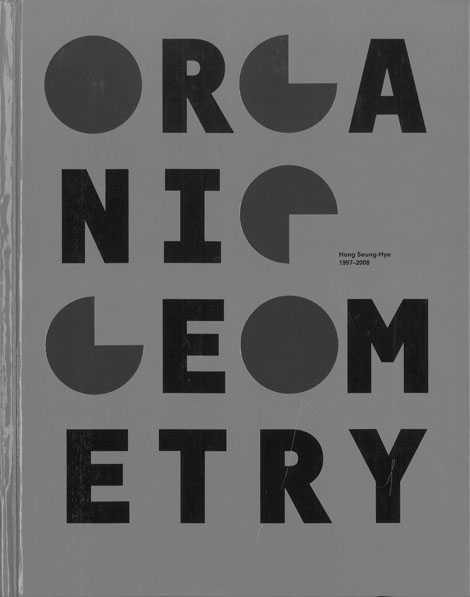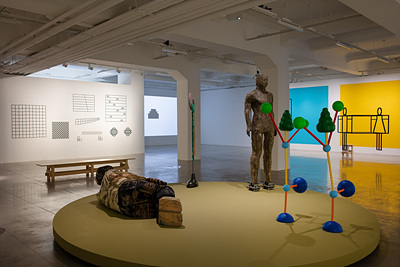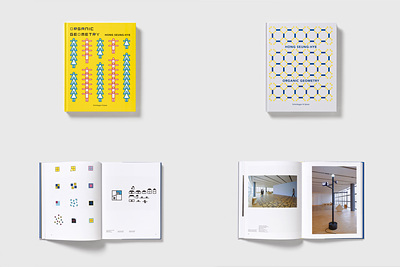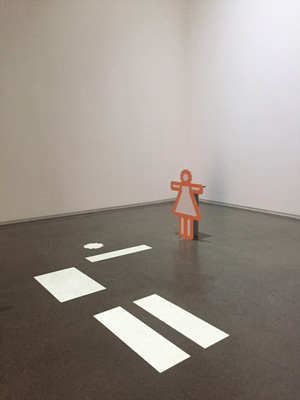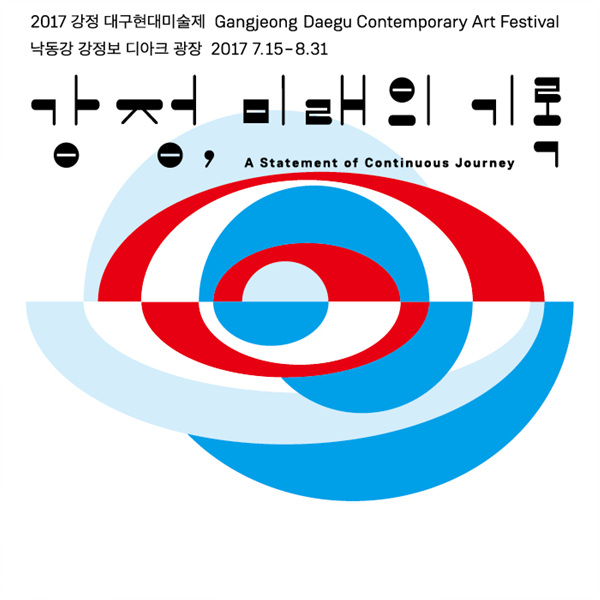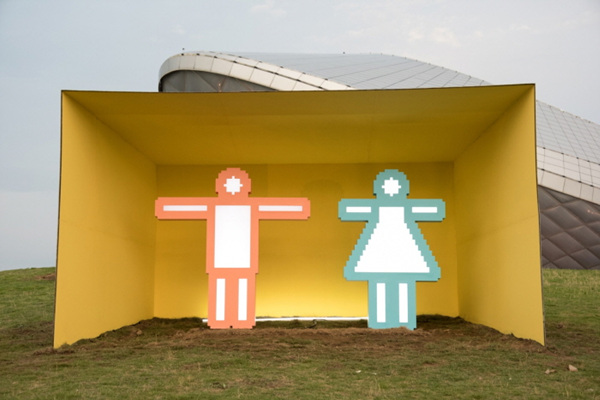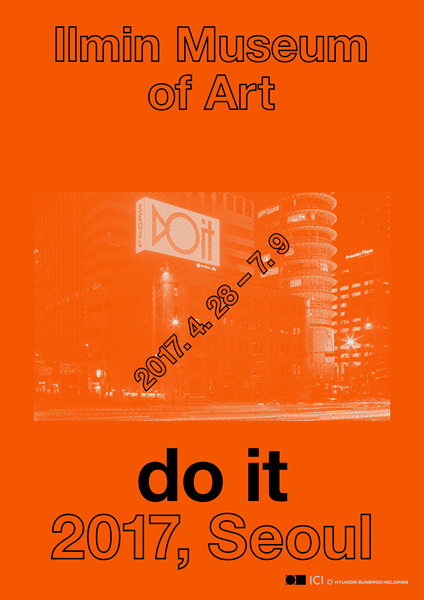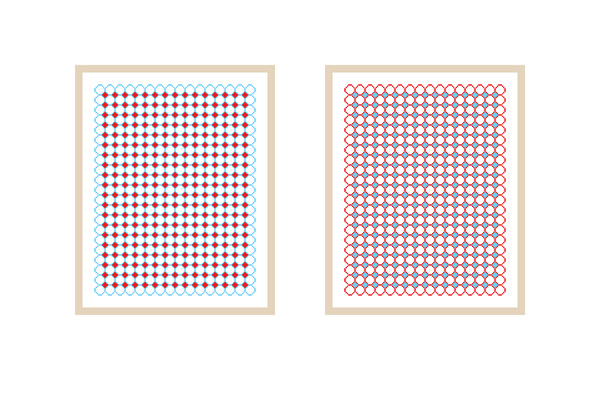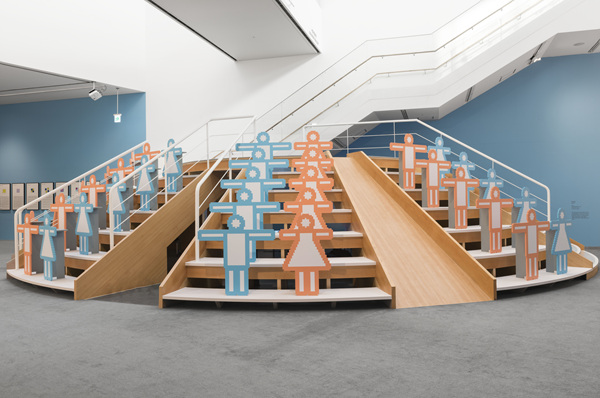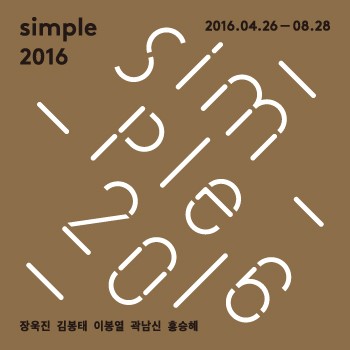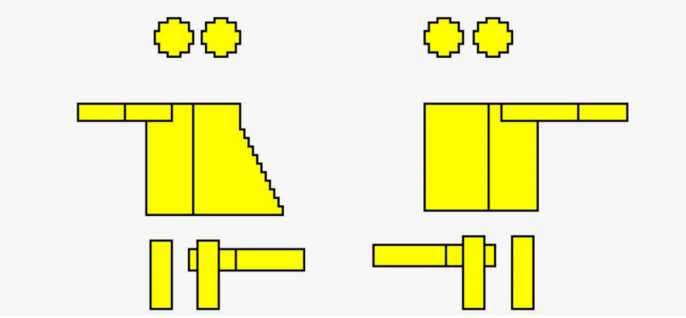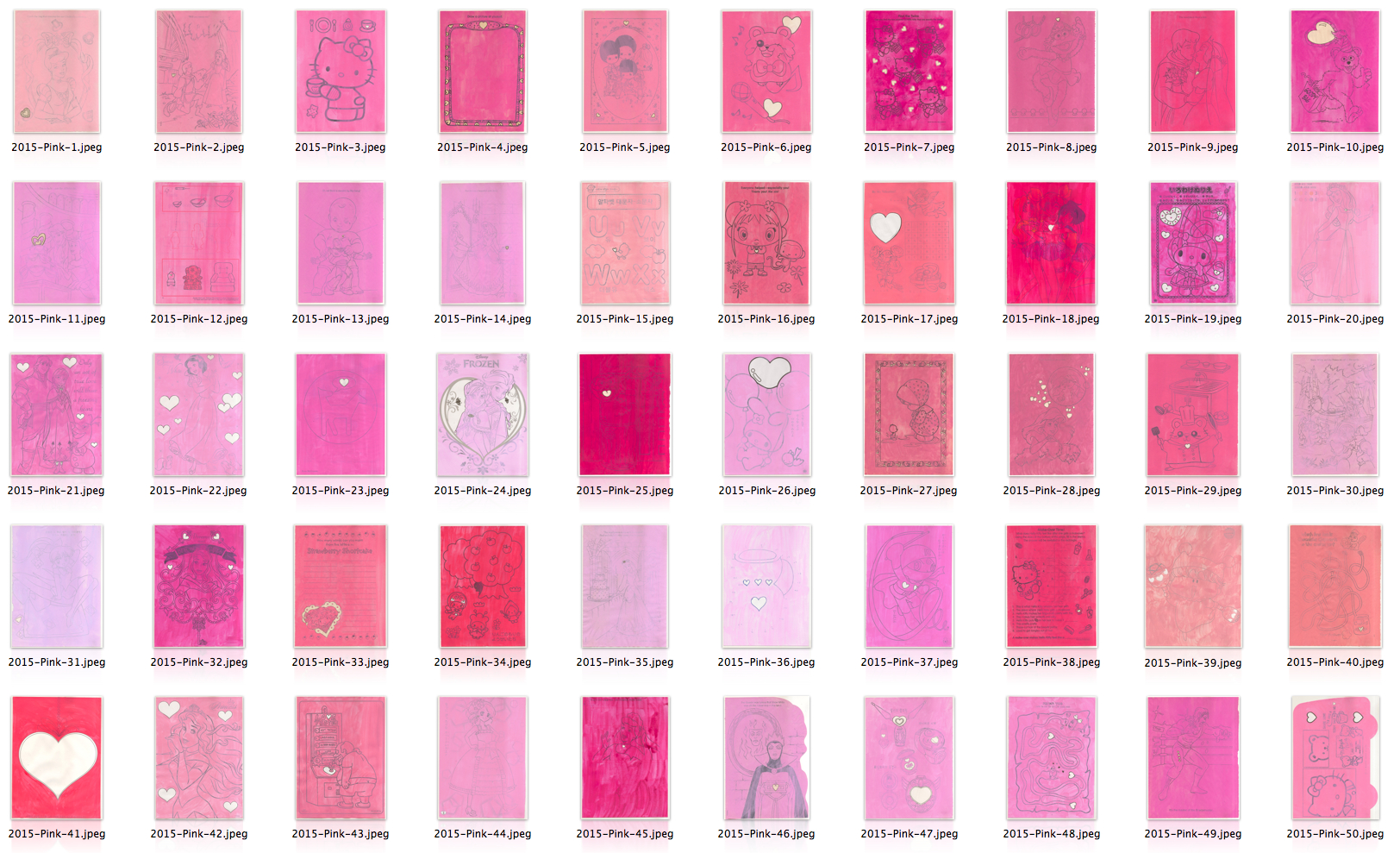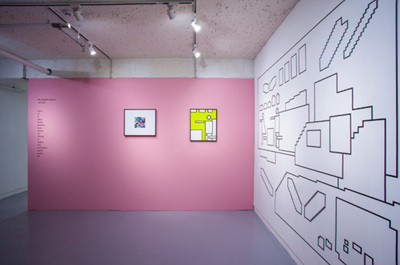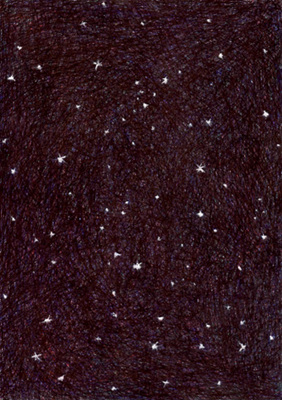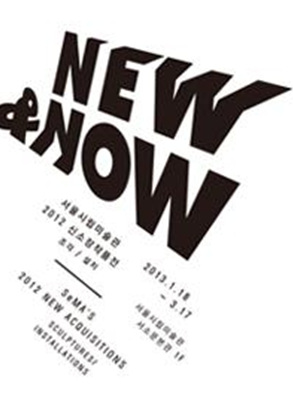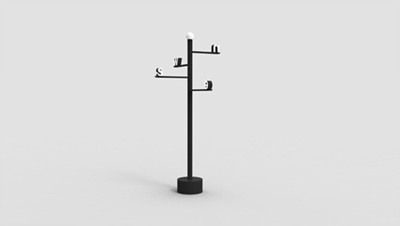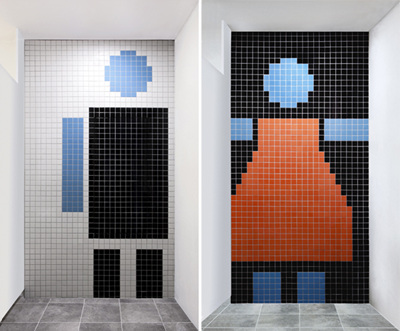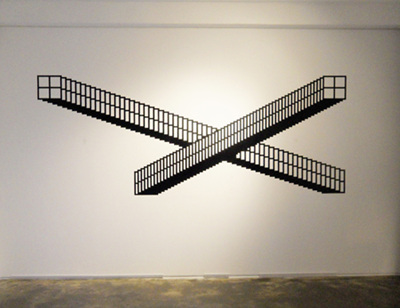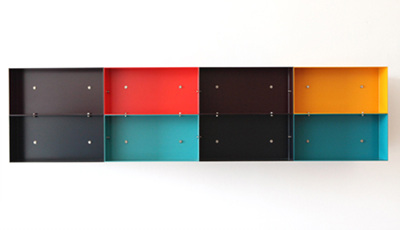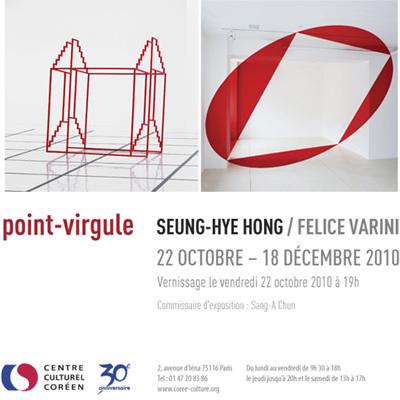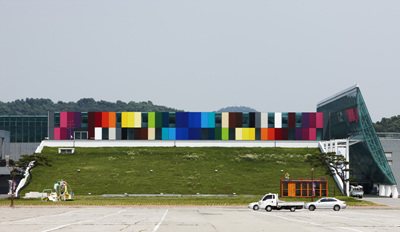 Organic Geometry | KUKJE GALLERY
Organic Geometry | KUKJE GALLERY
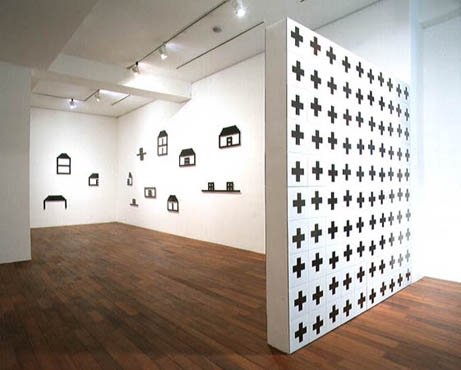
Sep 22, 2000 - Oct 20, 2000
K1
Seoul
INTRODUCTION
Korea has a surprisingly rich history of late-Modernist abstraction, that is, unfortunately, too little knownabroad. What's not always obvious is how deeply this abstraction is rooted in everyday life. Kim Whanki's great paintings of the 1970s-vast fields of reiterated cell-like quanta of color-can be interpreted as rice fields, a linkage that makes sense for an artist of Whanki's generation. Born early in the century, he would have made his art out of memories of a landscape he grew up with.
In many ways, an art like Whanki's still provides workable models for today's Korean artists, and yet one like Hong Seung-Hye, born in 1959, is part of a very different generation with vastly different memories - urban memories, for the most part. During Hong's lifetime, Seoul's population has grown more than 600 percent, and its area doubled. Urbanization is one of the primary experiences of postwar Korean life. Many of Hong's works are based on accumulations of identical or similar cell-like modules, just as Whanki's were, but they add up to a landscape that is domestic, architectural, and urban, never rustic, never offering open vistas. The units that make up this landscape can be completely abstract (a grid of squares, for instance), they may be perfectly poised between abstraction and representation (as when a square of four or nine smaller squares suggests a window), or they can be schematic representations (logo-like symbols for the concept "house").
Hong has long been interested in painting by nontraditional means. In the early and mid-1990s, her work was collages of painted paper, arranged to form images of highly distilled shapes - geometricized trees, flowers, houses, and so on. Though modest in scale, these works (which to an American viewer's eye bore some kinship to Jennifer Bartlett's imagery of the late 1970s) claimed the full weight of painting despite their deliberate evocation of a hobbyist's pastime. Since then, Hong has been working primarily at her computer, where she designs her paintings to be produced by industrial fabrication - as either silk-screened tiles or automobile paint on aluminum panels. Although the artist's hand is no longer in direct evidence, Hong's variations within the sequencing of the combined units lend a vivid sense of organic unpredictability and tactility to these otherwise clear, crisply graphic works.
Hong's "Organic Geometry" clearly emerges from everyday life, but also seems poised to return there. As Roe Jae-Ryung has remarked, these modular arrays seem to cry out for adoption in "architectural and public art projects." And yet what is poignant in this bright, shiny, innocent yet lucid work may be precisely the fact that it evokes a placeless domesticity, a homeless architecture, an absent dwelling. It touches a tender spot in the individual's relation to her objective environment. - Barry Schwabsky
한국은 아쉽게도 국외에는 잘 알려지지 않았지만 깜짝 놀랄 만큼 풍부한 후기 모던 추상의 역사를 가지고 있다. 늘 궁금한 점은 이러한 추상 작품들이 일상생활에 얼마나 깊이 근본되어 있느냐 하는 것이다. 김환기의 훌륭한 1970년대 작품에서 보이는 지루할 만큼 반복되는 색으로 이루어진 셀(cell)의 축적이 이루는 광대한 벌판은 김환기 세대의 작가들이 이해할 수 있는 연결 고리인 논으로 해석될 수 있다. 금세기 초에 태어난 그는 그가 자란 풍경의 기억으로부터 작품을 만들었을 것이다. 여러 방면에서 아직까지도 김환기류의 작품들이 오늘날 한국 작가들에게 사용 가능한 모델이 되기도 하나, 1959년 생인 홍승혜의 작품들은 광대하게 다른 기억을 가진 - 대부분 도시적 기억인 - 매우 다른 세대의 범주에 속한다. 홍승혜의 세대에는 서울의 인구가 600퍼센트 이상 증가했고, 지역의 크기는 두 배 이상 확장됐다. 도시화는 전쟁 후 한국 삶에서 가장 주요한 경험중의 하나이다. 김환기의 작품과 마찬가지로 홍승혜의 작품들은 동일하거나 유사한 셀(cell)같은 모듈의 축적에 기반을 두고 있다. 하지만 이들은 결코 전원적이거나 탁 트인 전망을 제시하지 않고 가족적, 건축적, 그리고 도시적인 풍경을 구축한다. 이러한 풍경을 구성하고 있는 단위들은 예를 들어 사각형의 격자판과 같이 완벽히 추상적일 수도 있고, 4개나 9개의 작은 사각형들로 만들어진 사각형이 창문으로 보여질 때와 같이 추상과 묘사 사이에서 완벽한 평형을 유지하고 있을 수도 있으며, 집이란 개념을 위한 로고와 같은 도식적인 표현이 되기도 한다. 홍승혜는 오래 전부터 비전통적인 매체를 통한 회화에 관심을 가져왔다. 1990년대 초ㆍ중반, 그녀의 작품들은 기하화된 나무, 꽃, 집 등, 고도로 정제된 이미지들을 형성하고 있는 채색된 종이들의 꼴라주였다. 미국 관람객의 눈에는 1970년대 후반의 Jennifer Bartlett의 이미지들과 비슷하게 보이는 이 작품들은 크기는 대단치 않으나 최대의 회화적 무게를 싣고 있다. 이 작품들이 그저 취미생의 소일거리라고 고의적으로 환기시키고 있음에도 불구하고 말이다. 그 후로 홍승혜는 타일에 실크스크린이나 알루미늄 판 위에 자동차 도료를 사용하며, 주로 공업적 방식으로 작품들이 제작되도록 컴퓨터로 작업을 해오고 있다. 비록 작가의 손길이 더 이상 직접적으로 보여지지는 않지만, 결합된 단위의 연속 안에서의 변주는 또렷하고 그래픽하기만 할 작품에 생생한 유기적 예측 불허감과 촉감을 부여한다. 홍승혜의 유기적 기하학은 분명 일상생활로부터 발생한 것이지만, 또한 다시 그리로 돌아갈 자세를 취하고 있는 것처럼 보인다. 노재령이 말한대로 이 모듈식 배열들은 건축적 공공 미술 프로젝트에 적용되기를 부르짖고 있는 것처럼 보인다. 그러나 이 밝고 반짝이고 순수하나 명쾌한 작품 속에서 무엇보다 날카로운 감동을 불러일으키는 점은, 정확히 말해 이 작품이 장소 없는 가정, 집 없는 건축, 부재적 주거를 일깨운다는 사실일 것이다. 이는 개인의 객관적 환경과의 관계에 있어 미묘한 부분을 건드리고 있는 것이다.
In many ways, an art like Whanki's still provides workable models for today's Korean artists, and yet one like Hong Seung-Hye, born in 1959, is part of a very different generation with vastly different memories - urban memories, for the most part. During Hong's lifetime, Seoul's population has grown more than 600 percent, and its area doubled. Urbanization is one of the primary experiences of postwar Korean life. Many of Hong's works are based on accumulations of identical or similar cell-like modules, just as Whanki's were, but they add up to a landscape that is domestic, architectural, and urban, never rustic, never offering open vistas. The units that make up this landscape can be completely abstract (a grid of squares, for instance), they may be perfectly poised between abstraction and representation (as when a square of four or nine smaller squares suggests a window), or they can be schematic representations (logo-like symbols for the concept "house").
Hong has long been interested in painting by nontraditional means. In the early and mid-1990s, her work was collages of painted paper, arranged to form images of highly distilled shapes - geometricized trees, flowers, houses, and so on. Though modest in scale, these works (which to an American viewer's eye bore some kinship to Jennifer Bartlett's imagery of the late 1970s) claimed the full weight of painting despite their deliberate evocation of a hobbyist's pastime. Since then, Hong has been working primarily at her computer, where she designs her paintings to be produced by industrial fabrication - as either silk-screened tiles or automobile paint on aluminum panels. Although the artist's hand is no longer in direct evidence, Hong's variations within the sequencing of the combined units lend a vivid sense of organic unpredictability and tactility to these otherwise clear, crisply graphic works.
Hong's "Organic Geometry" clearly emerges from everyday life, but also seems poised to return there. As Roe Jae-Ryung has remarked, these modular arrays seem to cry out for adoption in "architectural and public art projects." And yet what is poignant in this bright, shiny, innocent yet lucid work may be precisely the fact that it evokes a placeless domesticity, a homeless architecture, an absent dwelling. It touches a tender spot in the individual's relation to her objective environment. - Barry Schwabsky
한국은 아쉽게도 국외에는 잘 알려지지 않았지만 깜짝 놀랄 만큼 풍부한 후기 모던 추상의 역사를 가지고 있다. 늘 궁금한 점은 이러한 추상 작품들이 일상생활에 얼마나 깊이 근본되어 있느냐 하는 것이다. 김환기의 훌륭한 1970년대 작품에서 보이는 지루할 만큼 반복되는 색으로 이루어진 셀(cell)의 축적이 이루는 광대한 벌판은 김환기 세대의 작가들이 이해할 수 있는 연결 고리인 논으로 해석될 수 있다. 금세기 초에 태어난 그는 그가 자란 풍경의 기억으로부터 작품을 만들었을 것이다. 여러 방면에서 아직까지도 김환기류의 작품들이 오늘날 한국 작가들에게 사용 가능한 모델이 되기도 하나, 1959년 생인 홍승혜의 작품들은 광대하게 다른 기억을 가진 - 대부분 도시적 기억인 - 매우 다른 세대의 범주에 속한다. 홍승혜의 세대에는 서울의 인구가 600퍼센트 이상 증가했고, 지역의 크기는 두 배 이상 확장됐다. 도시화는 전쟁 후 한국 삶에서 가장 주요한 경험중의 하나이다. 김환기의 작품과 마찬가지로 홍승혜의 작품들은 동일하거나 유사한 셀(cell)같은 모듈의 축적에 기반을 두고 있다. 하지만 이들은 결코 전원적이거나 탁 트인 전망을 제시하지 않고 가족적, 건축적, 그리고 도시적인 풍경을 구축한다. 이러한 풍경을 구성하고 있는 단위들은 예를 들어 사각형의 격자판과 같이 완벽히 추상적일 수도 있고, 4개나 9개의 작은 사각형들로 만들어진 사각형이 창문으로 보여질 때와 같이 추상과 묘사 사이에서 완벽한 평형을 유지하고 있을 수도 있으며, 집이란 개념을 위한 로고와 같은 도식적인 표현이 되기도 한다. 홍승혜는 오래 전부터 비전통적인 매체를 통한 회화에 관심을 가져왔다. 1990년대 초ㆍ중반, 그녀의 작품들은 기하화된 나무, 꽃, 집 등, 고도로 정제된 이미지들을 형성하고 있는 채색된 종이들의 꼴라주였다. 미국 관람객의 눈에는 1970년대 후반의 Jennifer Bartlett의 이미지들과 비슷하게 보이는 이 작품들은 크기는 대단치 않으나 최대의 회화적 무게를 싣고 있다. 이 작품들이 그저 취미생의 소일거리라고 고의적으로 환기시키고 있음에도 불구하고 말이다. 그 후로 홍승혜는 타일에 실크스크린이나 알루미늄 판 위에 자동차 도료를 사용하며, 주로 공업적 방식으로 작품들이 제작되도록 컴퓨터로 작업을 해오고 있다. 비록 작가의 손길이 더 이상 직접적으로 보여지지는 않지만, 결합된 단위의 연속 안에서의 변주는 또렷하고 그래픽하기만 할 작품에 생생한 유기적 예측 불허감과 촉감을 부여한다. 홍승혜의 유기적 기하학은 분명 일상생활로부터 발생한 것이지만, 또한 다시 그리로 돌아갈 자세를 취하고 있는 것처럼 보인다. 노재령이 말한대로 이 모듈식 배열들은 건축적 공공 미술 프로젝트에 적용되기를 부르짖고 있는 것처럼 보인다. 그러나 이 밝고 반짝이고 순수하나 명쾌한 작품 속에서 무엇보다 날카로운 감동을 불러일으키는 점은, 정확히 말해 이 작품이 장소 없는 가정, 집 없는 건축, 부재적 주거를 일깨운다는 사실일 것이다. 이는 개인의 객관적 환경과의 관계에 있어 미묘한 부분을 건드리고 있는 것이다.
PUBLICATIONS
| Organic Geometry |
